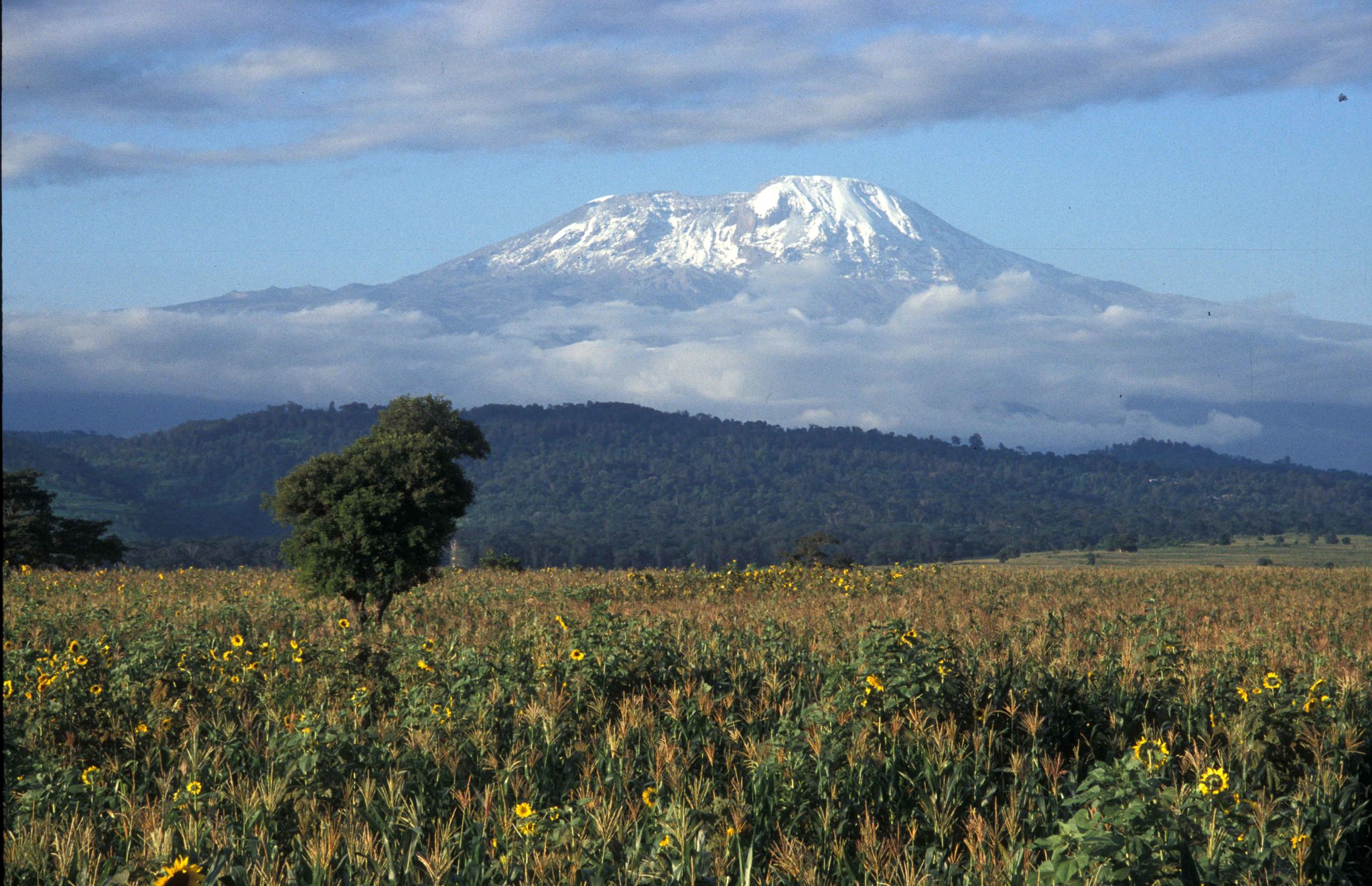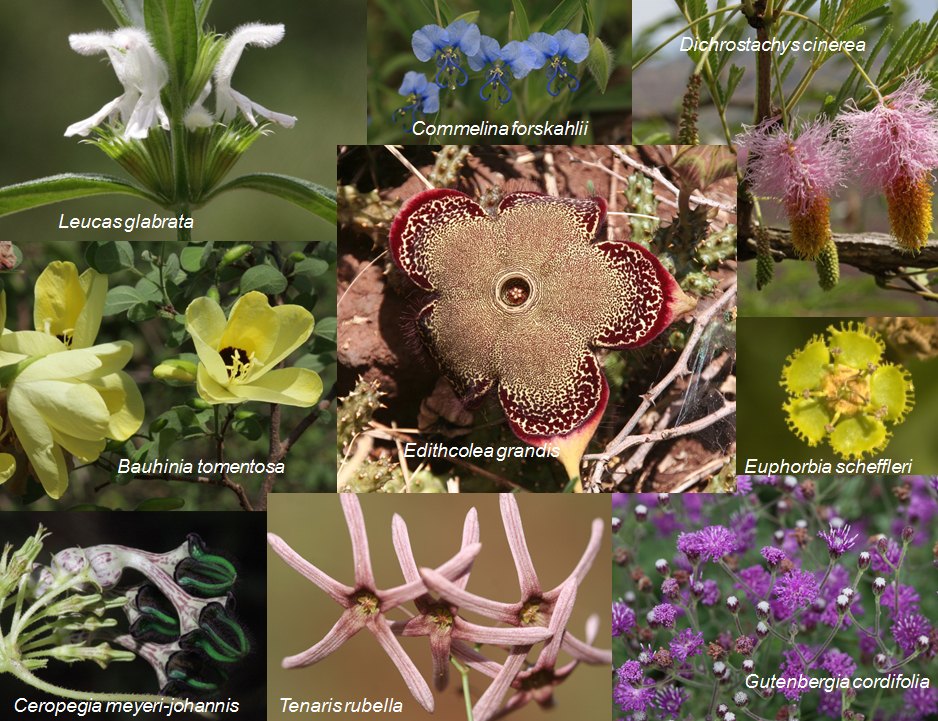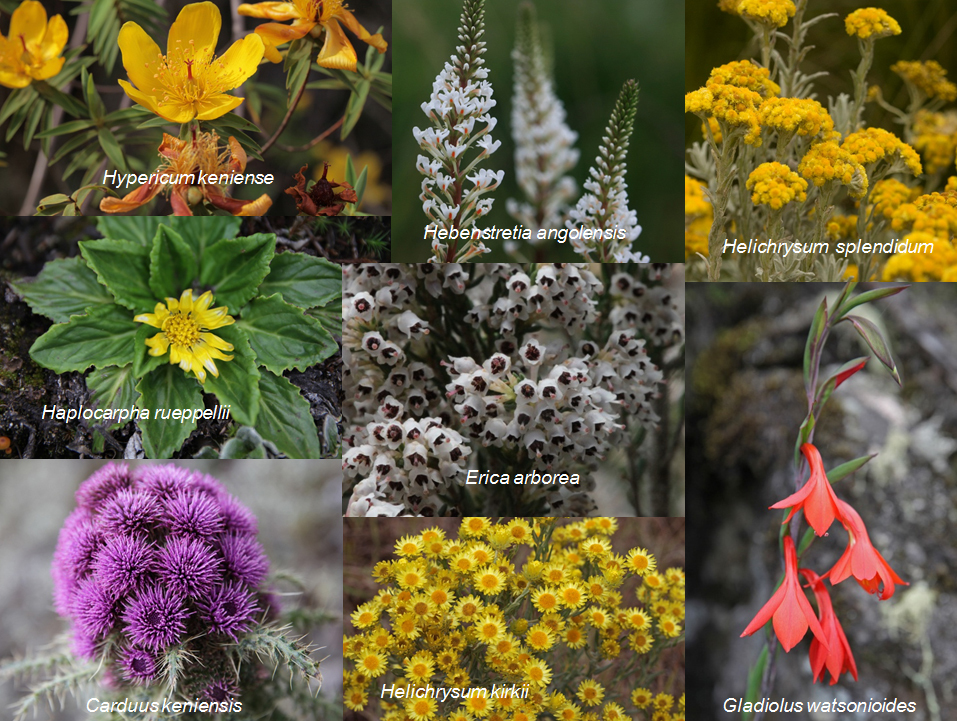 PD Dr.
PD Dr.Andreas Hemp
Research AssociateAt Plant Systematics (AG Angiosperms) until 12/2024
e-Mail: andreas.hemp(at)uni-bayreuth.de
Our research in East Africa (Ethiopia, Kenya, Uganda, Tanzania) started with ethnobotany, followed by vegetation ecology studies. Main research topics are drivers of biodiversity, vegetation zonation, forest regeneration, land cover change (together with Pekka Hurskainen, Helsinki) and paleoecology (together with Herman Behling and Lisa Schüler, Göttingen). A dataset of over 5000 Braun-Blanquet plots covering all vegetation formations of East Africa is used for this purpose, with a focus on forests, because this method is also an excellent tool for a variety of analyses in multi-layered and highly structured tropical montane forests. The only problem is: you have to know all the species that occur. This is how the collection of more than 10,000 herbarium specimens, digitized as part of the Global Plant Initiative and available on the JSTOR website (https://plants.jstor.org/compilation), came about. Together with Markus Fischer (Bern) and Claudia Hemp, we initiated the DFG research group KiLi (Kilimanjaro under global change, https://www.kilimanjaro.biozentrum.uni-wuerzburg.de/) in 2010 as a platform for interdisciplinary tropical biodiversity research and operate two scientific stations on Kilimanjaro. The role of nature for human well-being in the Kilimanjaro Social-Ecological System (Kili-SES) is the topic of another DFG research group that started in 2020. In addition, we seek to promote capacity building in Tanzania. The joint project Contan aims to strengthen the quality of higher education in Tanzania in terms of content and organization. It is funded by the EU program "Erasmus+ - Capacity-Building in the Field of Higher Education".





Some highlights: Discovery of the tallest tree and highest forests in Africa, unveiling the biogeographic mystery of Kilimanjaro's missing bamboo belt, predictors of elevational multi-taxa gradients in biodiversity, physio-topographic map of Kilimanjaro, ecological isolation of Kilimanjaro, effects of fire on Kilimanjaro's water balance.


In Europe, my research focuses on the ecology and dynamics of scree slopes and vegetation on dolomite, especially relict pine forests. Based on more than 2500 vegetation plots in all vegetation types of northern Bavaria, I have described the Buphthalmo-Pinetum and the Vincetoxico-Seselietum as new associations. Together with Claudia Hemp, we are investigating the relationships between Saltatoria coenoses and vegetation. With my scientific work I also want to contribute to nature conservation, e.g. with FFH management plans (in total more than 50 management plans and reports for nature conservation authorities). Within the BayernNetzNatur (BNN) project "Biotop Komplex Blockschutthalden" we have improved the ecological condition of scree slopes in the North Franconian Jura and in the BNN project "Naturnahe Wälder am Albtrauf bei Hersbruck" we have monitored semi-natural forests in Northern Bavaria. Improved protection of dolomite pine forests is the goal of another BNN project "Biotopkomplex Kiefernwälder und Trockenrasen der Dolomitkuppenalb" (together with Karl Heinlein, Hersbruck). Together with Markus Fischer (Bern) we founded the Biodiversity Exploratorium Schorfheide-Chorin as a platform for interdisciplinary biodiversity research in Germany.

Highlights include the discovery of microclimatic anomalies of boulder slopes and the uncovering of long-term anthropogenic influence in dolomite pine forests dating back to the Neolithic period




Selected publications (out of over 200):
Hemp A, Philipp C, Hemp C: European Union’s Natura 2000 network: an effective tool for nature conservation? The relic pine forests of the Franconian Jura. Biodiversity and Conservation (2022), DOI: https://doi.org/10.1007/s10531-022-02430-9
Komposch A, Ensslin A, Fischer M, Hemp A (2022) Aboveground Deadwood Biomass and Composition Along Elevation and Land-Use Gradients at Mount Kilimanjaro. Front. Ecol. Evol., 05 January 2022 | https://doi.org/10.3389/fevo.2021.732092
Hemp A, Del Fabbro C, Fischer M (2021) Area modulates the effect of elevation but not of land use or canopy on tropical plant species richness. Biodiversity and Conservation 30:4265–4277 https://doi.org/10.1007/s10531-021-02304-6
Molina-Venegas R, Fischer M, Hemp A (2020) Plant evolutionary assembly along elevational belts at Mt. Kilimanjaro: Using phylogenetics to asses biodiversity threats under climate change. Environmental and Experimental Botany 170:103853.
Hurskainen P, Adhikaria H, Siljandera M, Pellikka PKE, Hemp A (2019) Auxiliary datasets improve accuracy of object-based land use/land cover classification in heterogeneous savannah landscapes. Remote Sensing of Environment 233, 111354.
Molina-Venegas R, Fischer M, Hemp A (2019) Disentangling the fundamental branching patterns of phylogenetic divergence to refine eco-phylogenetic analyses. Journal of Biogeography (in press). DOI: 10.1111/jbi.13692.
Peters MK, Hemp A et al. (2019) Climate-land-use interactions shape tropical mountain biodiversity and ecosystem functions. Nature 568, 88-92.
Hemp A, Hemp C (2018) Broken bridges: the isolation of Kilimanjaro’s ecosystem. Global Change Biology 24, 3499-3507.
Schellenberger Costa D, Gerschlauer F, Kiese R, Fischer M, Kleyer M, Hemp A (2018) Plant niche breadths along environmental gradients and their relationship to plant functional traits. Diversity and Distributions 24, 1869-1882.
Peters MK, Hemp A et al. (2016) Predictors of elevational biodiversity gradients change from single taxa to the multi-taxa community level. Nature Communications 7, 13736. (DOI: 10.1038/ncomms13736)
Hemp A, Zimmermann R, Remmele S, et al. (2016) Africa’s highest mountain harbours Africa’s tallest trees. Biodiversity and Conservation 26, 103-113.
Appelhans T, Mwangomo E, Otte I, Detsch F, Nauss T, Hemp A (2016) Eco-meteorological characteristics of the southern slopes of Kilimanjaro, Tanzania. International Journal of Climatology 36, 3245-3258.
Hemp C, Kehl S, Schultz O, Wägele W, Hemp A (2015).Climatic fluctuations and topography as motor for speciation: case study on Parepistaurus Karsch, 1896 (Orthoptera: Acrididae, Coptacridinae). Systematic Entomology 40, 17-34. 10.
Hemp A (2005) Climate change driven forest fires marginalizes the ice cap wasting on Mt. Kilimanjaro. Global Change Biology 11, 1013-1023.
DFG-funded Projects:
DFG-projects HE 2719/1-1, HE 2719/1-2, HE 2719/2-1, HE 2719/2-2: Vegetation analysis of the montane forests of Kilimanjaro (1996-2001)
DFG-projects HE 2719/7-1 - HE 2719/9-1: Ecological transect studies on Kilimanjaro (2004-2006)
DFG-projects HE 2719/11-1 - HE 2719/11-3: Plant diversity and performance in relation to climate and land use on Mt. Kilimanjaro: communities, species, populations and genetics, FOR 1246 (2010-2018)
DFG-project HE 2719/14-1: Indirect and direct anthropogenic drivers: population increase, land management and conservation, FOR Kili-SES (ongoing)
Selected other projects:
UNEP, Nairobi: Aerial survey of the threats to Mt. Kilimanjaro forests, 2001 (together with Christian Lambrechts, Nairobi)
BayernNetzNatur-Project: "Albtraufproject Hersbrucker Alb - Biotopkomplex Blockschutthalden", 2011-2015 (together with Karl Heinlein, Hersbruck)
BayernNetzNatur-Projekt: „Albtraufprojekt Hersbrucker Alb – naturnahe Wälder“, 2018-2021 (together with Karl Heinlein, Hersbruck)
BayernNetzNatur-Projekt „Biotopkomplex Kiefernwälder und Trockenrasen der Dolomitkuppenalb, starting July 2022 (together with Karl Heinlein, Hersbruck)
Erasmus+ Programm of the European Union: CONTAN “Developing curricula for biodiversity monitoring and conservation in Tanzania”
>> Curriculum Vitae
>> Courses taught
